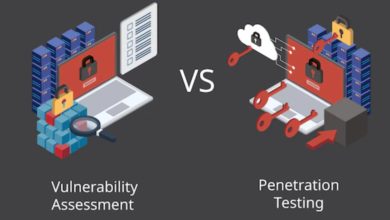8 Trends In Cyber Security To Watch Out For
KEY TAKEAWAYS
Cybercrime is a growing global concern, with losses from these activities expected to hit a staggering $8 trillion by the end of 2023, and by 2025, the volume is projected to become $10.5 trillion. These are significant financial damages that can compare to the local economies of certain countries.
In light of these statistics, cyber security has become a global priority for governments, organizations, and even individuals, given that most of their data is publicly available on the internet. With the digital revolution, cyber security is a primary goal across the board.
Here are some of the leading trends that are shaping the cyber security outlook globally:
1. Automotive hacking is becoming a mainstream cybercrime
Remember that scene from Fast and Furious where Charlize Theron hacks almost every car with a chip across town to control them remotely? Well, that is no longer a movie gimmick. Vehicles are now loaded with technology, and a lot of the programs are connected with not just the auto manufacturer but other vehicles as well. This means that vehicles are susceptible to hacking.
Did you know that between 2018 and 2021, the cases of automotive hacking grew by an astounding 225%? This shows that the threat is significant and will continue to grow as autonomous driving and other integrated technologies become mainstream. This is an element leading automobile manufacturers working on to prevent, but it is a rising trend nonetheless.
2. The growing interest in cybersecurity education
With the rise of demand for cyber security professionals, enrollment in various courses and certifications has grown drastically. There is still a gap between the supply of talented professionals and their demand in various workplaces, which means that organizations are willing to pay big bucks for people with the relevant skills.
Modern cyber security curriculum has become a part of the academic offering globally, and this is a trend that is going to continue. As time goes on, the skills in demand will only increase, triggering educational institutions to adopt and offer various degree programs and courses in cyber security and its related fields.
3. AI and its potential for extensive change
AI has become the face of the future. From content generation to developing visuals, from automated communication to facial detection, the role of AI is continuously growing in the contemporary workplace. Through constant evolution, AI programs have become powerful enough to aid in projections, analysis, forecasts, and a host of other activities that were previously considered an exclusive capability of the human mind.
Unfortunately, cybercriminals, as always, are a step ahead of the industry in terms of adopting AI too. And obviously, they are not using it for the greater good of businesses and individuals. In fact, they are putting AI to the task of cleverly creating malware that can compromise systems across the globe. Not many experts saw this move coming, which is why it has become a leading topic of discussion now.
4. Mobile devices are under fresh threats
An increasing amount of data traffic has become mobile-based these days. Smartphones are valuable data caches holding photos, financial information, and a host of other sensitive data. This means these devices are a hotspot for hackers as they can find all the information they need in one place. Unsurprisingly, experts predict an almost 50% increase in mobile malware instances over the coming years.
This trend is already concerning the world since individuals and companies alike rely heavily on handheld devices. Moreover, with technological improvements, most field-based jobs are also going mobile. For instance, controlling various heavy machinery can now be done through programs installed on tablets or laptops. Hacking any of these devices can give cybercriminals access to avenues that may lead to considerable damage.
5. Cloud systems and their growing vulnerability
60% of all corporate data worldwide is now stored on cloud servers. For large-scale enterprises, the volume stands at about 90%, with the addition that they use a multi-cloud infrastructure because of the amount of data they store. While this shows progress, it also demonstrates how virtual lockers hold most of the information people and businesses consider sensitive.
Unfortunately, there is a flip side to this. Since it is common knowledge that most data is stored on cloud servers, hackers are increasingly targeting them. In the past, industry leaders like Accenture, Verizon, Cognyte, and Kaseya, to name a few, have reported breaches in their cloud servers, leading to data related to millions of users being stolen. This has become a prevalent trend, and although efforts to strengthen cyber security on these servers are underway, it seems like hackers have a head-start.
6. 5G-enabled IoT – new opportunities and risks
The Internet of Things is not something new. In fact, it has been around for many years now and has even made its way into consumer products. However, with the age of high-speed 5G internet, the network of devices worldwide is vulnerable to fresher threats since the slightest software bug can compromise the entire grid.
Although the world is rooting for 5G, it is still a relatively new technology that requires significant research before cyber security loopholes can be addressed effectively. As time passes, efforts and innovations to make 5G and its relevant technologies more secure will continue. This is another trend worth looking out for.
7. Integration and automation
Focal integration between various departments of the same company and different organizations and automation of repetitive tasks is a norm in modern corporate infrastructures. It has become a lean and flexible way to improve productivity and efficiency. However, given that integration and automation are essential for businesses, cyber security protocols are being implemented into these resources to make them better suited to fend off potential attacks.
8. Growing instances of targeted ransomware
Ransomware is a prevalent type of malware attack where cybercriminals hack into a system to hold sensitive data for ransom. In recent years, the wave of these attacks has grown substantially. The type of attacks has also evolved, with hackers now focusing on organizations and government institutions. These cases are growing extensively for various reasons, so potential targets now focus on cyber security more than before.
Conclusion
Cyber security is a field that emerged as a result of the threat from cybercrime. If the threat persists, so does the need for rapid development of security protocols. Keeping tabs on the latest developments in this field is an ideal way to continue working toward various solutions and be preemptive in the face of looming threats.





